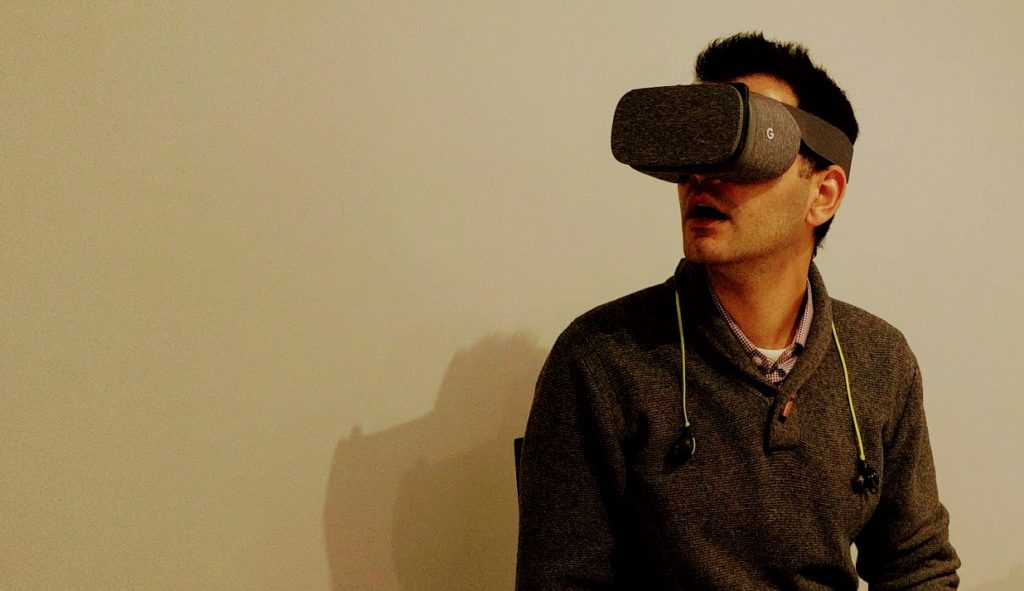8 The Presence of the Past: The Possibilities of Virtual Reality for History
Sean Kheraj
For the past year, I’ve been thinking a lot about virtual reality and its potential applications for historians. Can we use virtual reality to better understand the past? Can the experience of virtual reality alter historical thinking? Can we now build time machines, teleporters, and holodecks using virtual reality?
These questions may be overly optimistic or idealistic. I may look back on this article a year from now and shake my head and chuckle at my naive enthusiasm for this technology. But for now, VR has got me thinking about the future of history.
VR stands apart from other multimedia technologies primarily because of its ability to generate a sense of presence. Thomas B. Sheridan describes this as a “sense of being physically present with visual, auditory, or force displays generated by a computer.” He proposed three measurable physical variables to determine what he called “telepresence” and “virtual presence”: (1) extent of sensory information; (2) control of relation of sensors to environment; and (3) ability to modify physical environment. Does VR have the potential to generate a sense of the presence of the past?[i]
John Bonnett’s concluding remarks in his 2003 article on the 3D Virtual Buildings Project in Journal of the Association for History and Computing suggest that I’m not alone in my enthusiasm. He wrote, “3D environments are instruments, and if properly exploited they stand to provide historians with substantial gains in their capacity to teach, represent and analyze the past.” Remarkably, Bonnett’s outlook on the future of 3D environments predicted some of the most recent developments in virtual reality and augmented reality technologies:
In this vision of computing, users in near future will wear computers with the computational power of today’s desktops, and the size of today’s personal digital assistants. These computers, in turn, will be connected to wireless networks to access and post information, and to head mounted displays the size of glasses to display information. I mention this newly emerging field because it is already making a contribution to the way we represent the past, and the way we tell stories. In principle, it should be possible in the next 10 to 20 years to produce something akin to the holodeck from Star Trek. We will not be able to interact with objects without the mediation of glasses or gloves. But we should be able to generate representations of ancient Rome or 19th century Paris, and project them onto football fields.fields.[ii]
Smartphones with stereoscopic viewers (Google Cardboard, Daydream View, Gear VR) and tethered VR/AR headsets like the HTC Vive, Oculus Rift, and Microsoft HoloLens have brought us closer to that holodeck-like experience. Immersing yourself in a 3D representation of nineteenth-century Paris is not a fantasy. It can be done now.
In this article, I’d like to show some examples of how VR can be used today to, in Bonnett’s words, “teach, represent and analyze the past.”
Teach the Past
Virtual reality, like many other technologies before it, holds the potential to enhance history education. VR headset manufacturers and application developers have already been pushing the idea of using this technology for teaching. Microsoft has focused its early attention on medical education.
Google is not far behind and already offers an introductory VR education product called, Google Expeditions. Using Google’s relatively inexpensive Cardboard headsets, teachers can guide students on virtual field trips. Students can be teleported to historic sites around the world and view them through Cardboard headsets.
Using spherical photography, Google has captured VR images of historic sites all over the world. This includes UNESCO World Heritage Sites, such as the Angkor Archaeological Park in Cambodia. Through Google Maps and Street View, users can explore the temples of the ancient city of Angkor:
https://goo.gl/maps/CU55Ni3zsU52
Viewing these images in a VR headset can be arresting. The ability to “take” our students to these historic sites is a powerful example of the potential of VR for history education.
Represent the Past
The public history applications of VR are ample and many institutions and organizations have already begun to experiment with the technology. There are now several short historical documentaries shot in spherical video on YouTube. With a VR headset, users are placed within the video. For instance, this short video takes viewers into the buildings and rooms of Bletchley Park to tell the history of code breaking during the Second World War and the work of Alan Turing and others:
Last summer, New York Times produced an impressive immersive VR video of the history of the Olympic Games with 3D reconstructions of stadiums from 1896 (Athens), 1932 (Los Angeles), 1968 (Mexico City), and 2008 (Beijing). Viewers stand in the middle of these stadiums as historical images from past Olympic Games surround them and oral histories with athletes play along with narration:
While these videos may just be another medium for representing history to broad public audiences, the capability of VR technology to generate a sense of presence and situate those audiences within past environments represents something different.
Analyze the Past
With VR technology, scholars may now be able to use that sense of presence to analyze history in new ways. Textual and visual documents along with oral accounts have been the primary sources historians use to access fragments of the past. They provide us with documentation and evidence about the past, but to what extent can they convey a sense of presence? Historians have used other methods to recreate the materiality of the past from food historians using historical recipes to the use of 3D printers to recreate objects from the past. Spherical photography and 3D virtual environments may provide historians with new ways of analyzing the past through presence.
Once again, we can draw from the enormous spherical photography archive of Google Street View to begin to see the future potential of VR for historical analysis. Google recently created a tool within Street View to allow users to “travel to the past” by accessing images from the past decade of the Street View project. In effect, Google has created a massive spherical re-photography project. For instance, users can view the transformation of the World Trade Center site in Manhattan from 2007 to 2016:
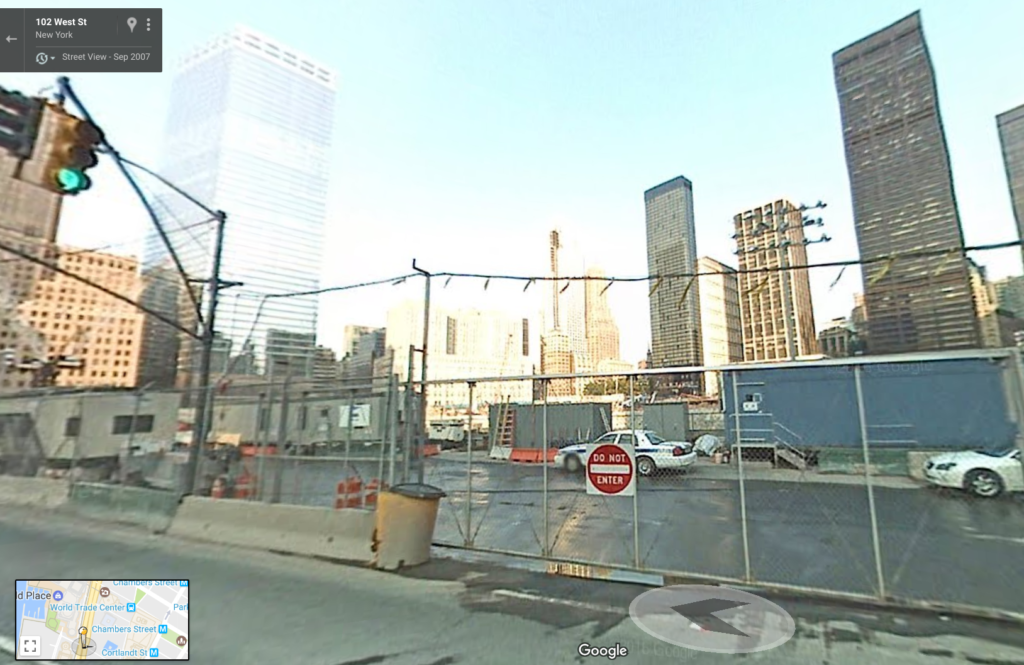
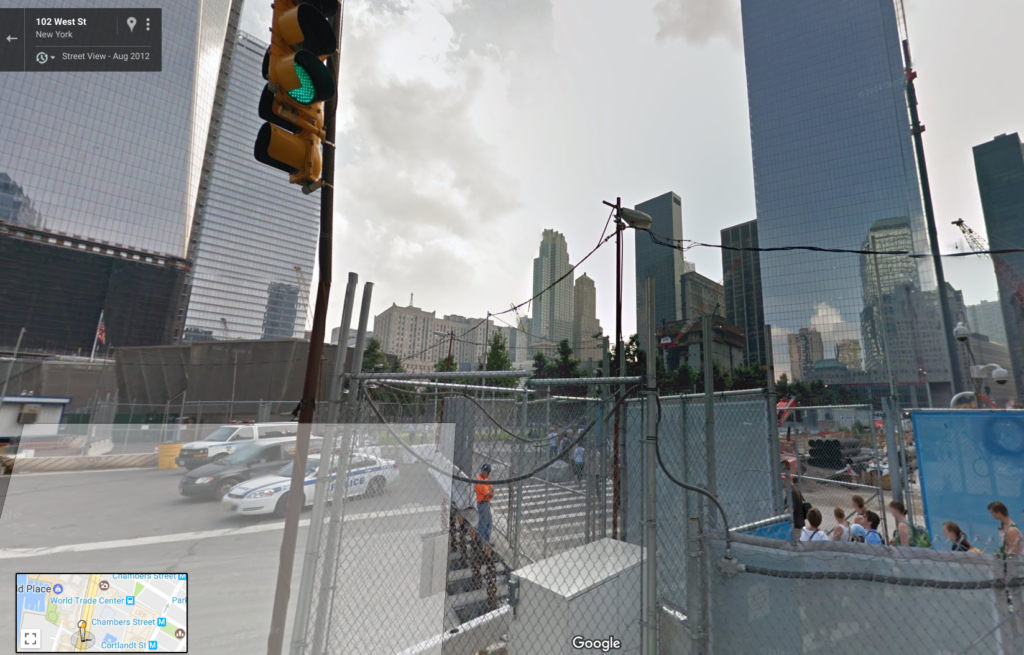
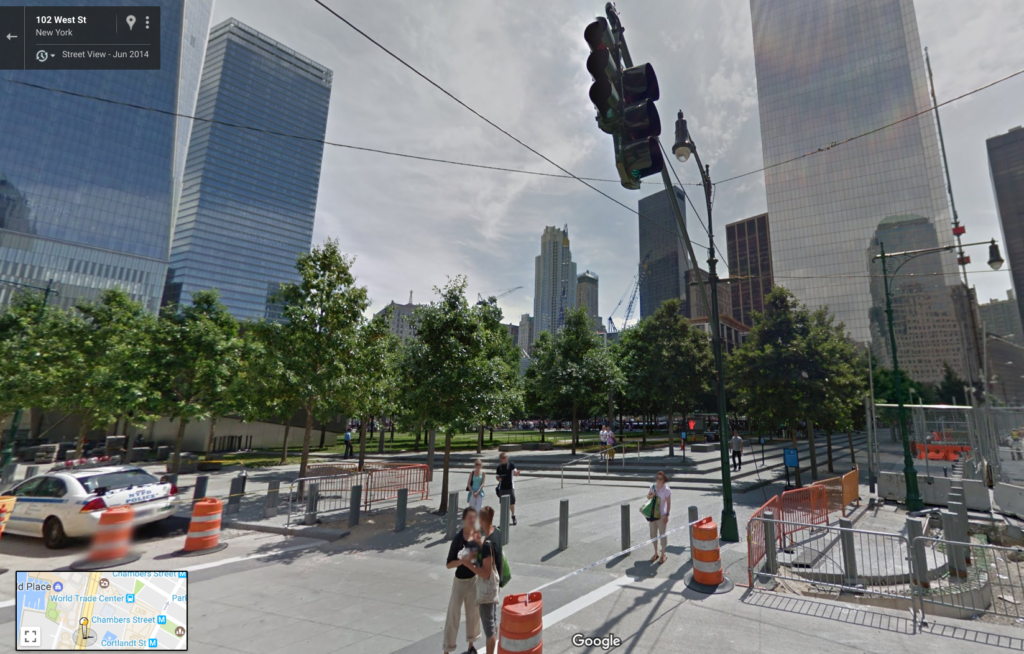
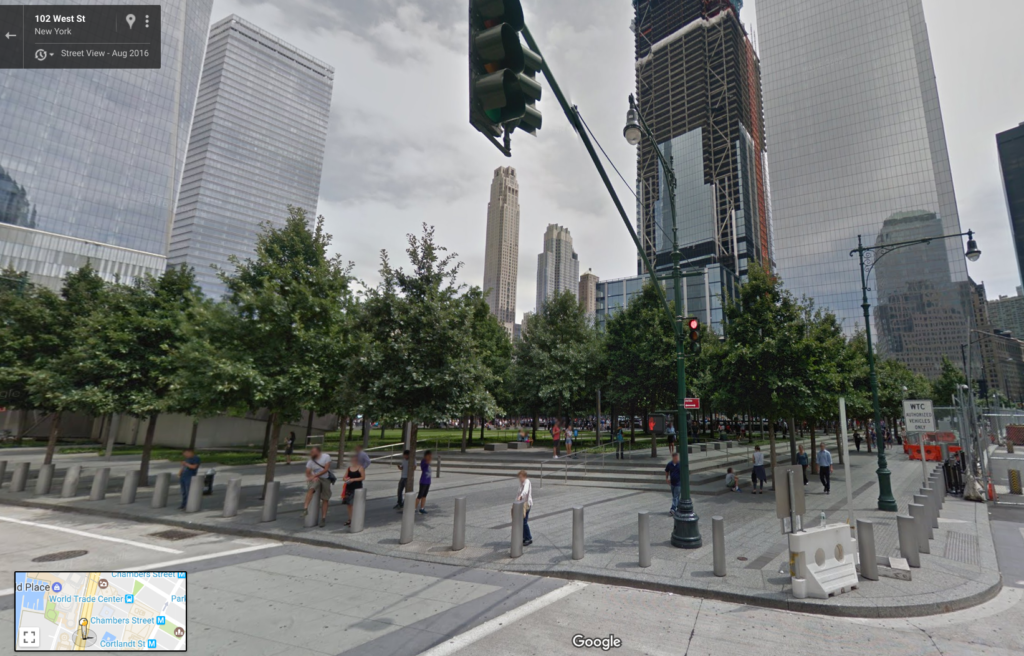
Historians can now travel ten years into the past and experience a sense of presence with this tool. This type of primary source and the ability to stand in the past isn’t limited to twenty-first century photography. Historical panoramic photographs from the late nineteenth and early twentieth centuries can also be viewed in VR. Although these images are not spherical, they can still give the viewer a sense of presence by wrapping around the viewer’s head within the VR headset. For example, the City of Vancouver Archives has a number of outstanding high-resolution panoramic photographs like this one from Shaughnessy Heights in 1911:

Using Full Dive, a mobile VR app, the panorama can be stretched and wrapped around the viewer to recreate the view of the photographer standing in the middle of the clearcut forest and future site of suburban development in Vancouver:

The experience of viewing a historical panorama in a VR headset can be powerful. It can generate a sense of presence. Or is this just an illusion? Is this just a twenty-first century stereoscope?
Finally, VR has expanded the possibility for interacting with 3D models, the type that Bonnett described in his 2003 article. Here the possibilities are astounding. Bonnett sketched out a vision for a massive crowd-sourced historical 3D modelling project, one that was not technologically feasible in 2003. Today, such a project does exist in SketchFab.
SketchFab is an online community for sharing 3D objects and environments. Users can share, view, and interact with 3D objects in a web browser. More impressively, these objects can be viewed in VR directly from the browser. While the collections in SketchFab include a wide range of objects, there are incredible collections of reconstructed historical artifacts, buildings, and environments.
Take for instance the work of the Arc/k Project, a non-profit group that uses crowd-sourced photographs and photogrammetry to reconstruct cultural heritage sites that people have destroyed. Recently, they have worked to virtually reconstruct ancient Roman sites in Palmyra, Syria which ISIS destroyed. Users can now use VR headsets to walk through and explore the third-century Arch of Triumph, destroyed in October 2015:
The possibilities of VR for historians are exciting and certainly worth further exploration and critical analysis. Are these examples simply flashy gimmicks or do they represent future tools for history educators, public historians, and scholars? There are clearly some current applications of VR for history. Through our teaching and scholarship, we may find more ways to use presence to better understand the past.
[i] Thomas B. Sheridan, “Musings on Telepresence and Virtual Presence” Presence 1, no. 1 (Winter 1992): 120.
[ii] John Bonnett, ““Following in Rabelais’ Footsteps: Immersive History and the 3D Virtual Buildings Project” Journal of the Association for History and Computing 6, no. 2 (September 2003).

